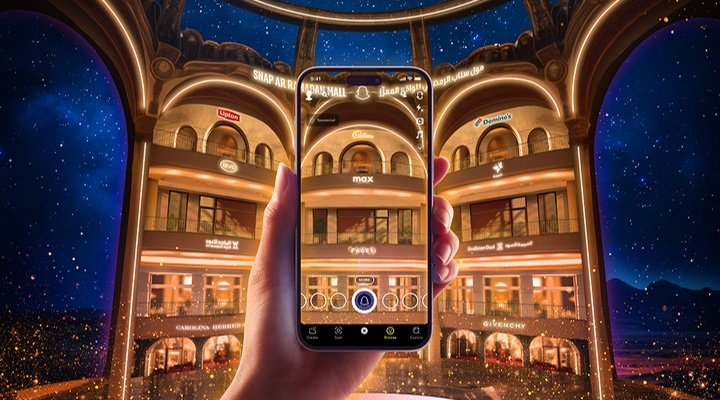When it comes to retail, nothing drives up sales quite like the holidays. But while holidays like Christmas and Hanukkah are known for driving sales in the US, other holiday celebrations, such as Ramadan, are also huge drivers of retail sales in areas such as the Middle East, North Africa, and Southeast Asia. Ramadan, which takes place during the ninth month of the Islamic calendar, is an occasion observed by Muslims worldwide as a month of fasting, prayer, reflection, and community. Runni
Running from March 12 to April 9 this year, the spiritual event is then followed by a three-day celebration of Eid al-Fitr, or “the feast of breaking the fast”.
According to a report by global data and business intelligence platform Statista, the value of retail sales during the month of Ramadan in the Middle East, North Africa and Southeast Asia totaled approximately US$144 billion, with 46 per cent of sales generated in the Middle East and North Africa.
While Ramadan has been routinely celebrated in the Middle East, North Africa and Southeast Asia, retailers in the US and UK have only been more recently investing in Ramadan-centred retail promotions.
In a report by retail intelligence company Edited, analysts Robyn Smith and Heather Ibberson wrote that e-mail communications related to Eid in the US have increased by 94 per cent year-over-year.
Additionally, Addison Cain, a beauty strategy and innovation manager at consumer behaviour and trend analysis company Spate, shared that the average number of US-based Google searches for Ramadan has reached 681,000 per month, an increase of 5 per cent year over year.
In addition to online marketing campaigns and e-commerce initiatives, retailers are also investing in alternative shopping experiences this Ramadan season.
Virtual Ramadan retail initiatives
From cosmetic brands like Pat McGrath to apparel and accessories retailers like StockX, more players within the retail industry are investing in virtual and augmented reality-centred retail experiences, especially for festive occasions.
For the third year in a row, French beauty brand L’Occitane en Provence debuted a virtual store in celebration of Ramadan on March 12. The virtual store was designed in partnership with virtual reality tech developer Emperia and mimics a Middle Eastern-inspired house. Through the virtual “location” consumers can shop exclusive gift sets and take part in activities like a skin-care questionnaire that recommends products to help shoppers address skin dehydration issues commonly found in customers fasting during
Mariana Rodrigues, marketing director of L’Occitane Middle East, said in a statement, “We are thrilled to step into our customers’ homes during this holy month, aiming to transcend traditional boundaries and to transform moments into lasting memories by launching our captivating virtual reality experience for the launch of our Ramadan Village.”
“We believe in weaving immersive storytelling and unique experiences that resonate with the spirit of this holy month, creating a profound connection with our valued customers,” Rodrigues concluded.
L’Occitane isn’t the only company to launch a Ramadan-themed virtual retail experience.
Tech platform Snap launched the third iteration of its AR-based Ramadan mall this year, which a Snap representative described as “a groundbreaking digital experience that merges the realms of physical and digital shopping through the power of augmented reality (AR)”.
“It is a 360-degree, multi-level virtual marketplace that users can visit through a Snapchat Lens,” the representative said. “This immersive space allows Snapchatters to browse and shop exclusive deals from leading brands across luxury, fashion, beauty, food and beverage, and automotive.”
The mall has grown larger in scope each year. This year, Snapchatters can indulge in the luxury pop-up boutiques of 11 prominent brands, including Carolina Herrera, Givenchy, MAX, Rifi, Arabian Oud, AlMajed Oud, Domino’s Pizza, Lipton, Cadbury, and BYD.
“What’s more, the mall will feature dual designs for Ramadan and Eid celebrations, with a mesmerising night-time theme throughout Ramadan, and a radiant transformation adorned with crescents and stars once Eid arrives,” the representative stated.
When Snap first introduced its AR-based Ramadan mall in 2022, the company partnered with just four brands. The following year, the mall experienced a 33 per cent increase in visitors, “with an average playtime of 26.3 seconds, indicating growing engagement and interest among Snapchatters.”
“The third edition of the Snap AR Ramadan Mall promises to be our most ambitious yet,” the representative remarked.
How retailers can invest in AR for Ramadan
For retailers that want to engage with consumers year-round, especially during festive occasions, AR experiences present a wide range possibilities.
As the Snap representative told Inside Retail, “We believe that our AR technology is the most compelling way to communicate, and in MENA [Middle East and North Africa], over 80 per cent of people are interested in using AR to interact with a product before buying it.”
In addition to retail experiences like the virtual Ramadan mall, “retailers can use AR to enhance traditional Ramadan activities, such as virtual iftar gatherings, interactive storytelling, or augmented reality decorations and greetings,” Snap’s representative explained. “Embracing technology enables retailers to connect with their audience, foster community engagement, and provide memorable experiences during this significant time, making them an integral part of these key moments.”

